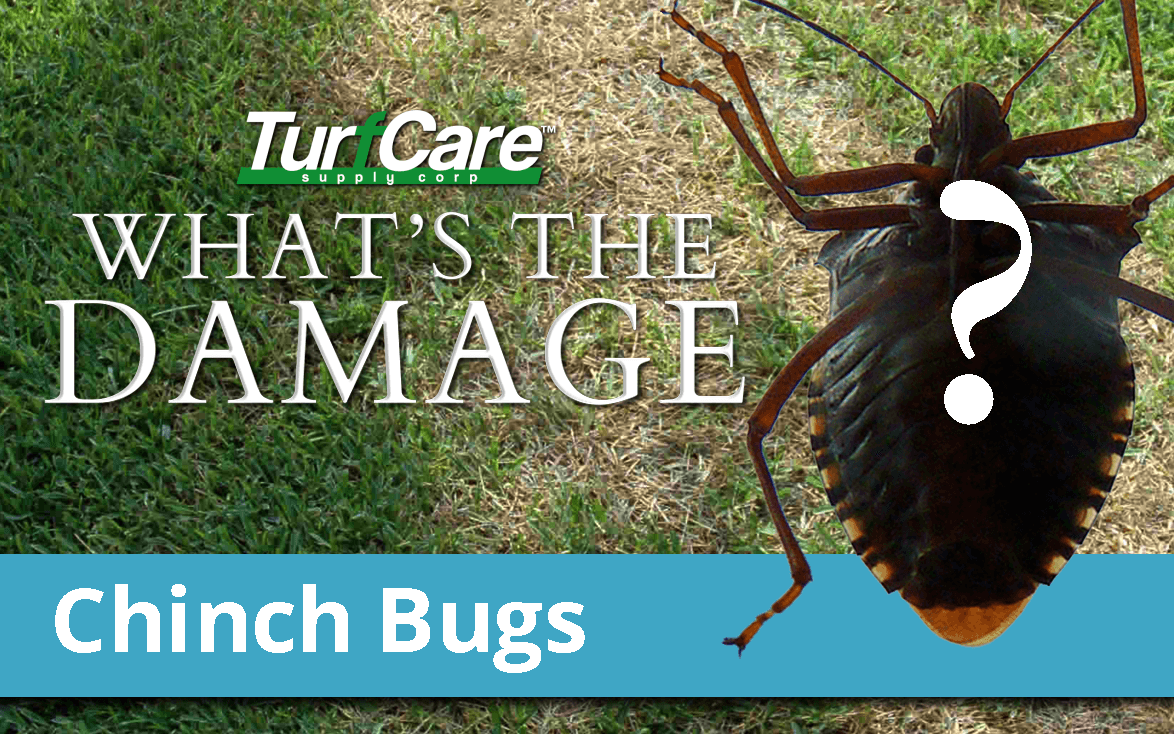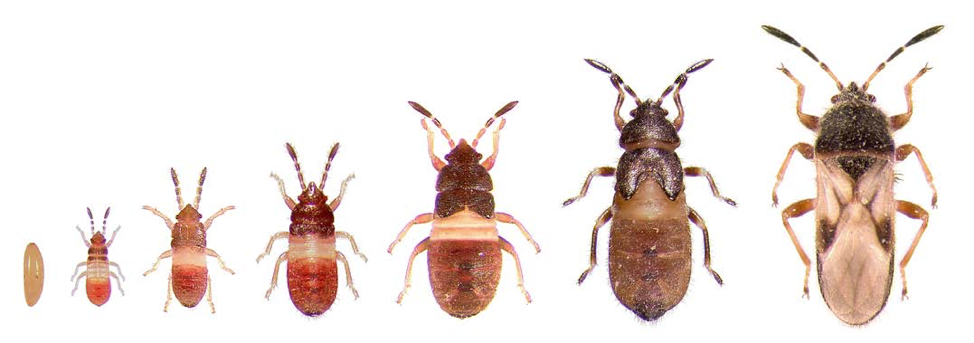What's the Damage? - Chinch Bugs


HOW TO IDENTIFY THESE PESTS The adults are 3.5 mm long and 0.75 mm wide. Males are typically smaller than females. The abdomen, pronotum and head vary from gray to black and are covered in fine hairs. Wings are white with a black spot located in the middle of the front-wing edge. The legs are often burnt orange. Nymphs (immature Chinch Bugs) take on the same shape but are about half the size of an adult. Nymphs can often be found with orange or red markings and have yet to develop wings.
INFESTATION SEASON
Normally occurs in July and mid-late August. Chinch Bugs do not become active until temperatures reach 50°F and above. Once temperatures reach 50°F or higher, adults become active, mate and lay eggs. A single female Chinch Bug can produce an average of 300 eggs over the course of 40-50 days. The eggs will hatch 1-2 weeks after to begin the new generation of Chinch Bugs (it takes 4-6 weeks for the new generation to become mature to start the breeding process over again).
HOW TO MANAGE
Chinch Bug has been a problem since the 1780s when they were known to destroy large crops of grain. They are relatively easy to control if caught early, before they mature. The best way to get rid of them is to treat your lawn with an insecticide labeled for Chinch Bugs like Talstar . If you are unsure of whether or not you have Chinch Bugs, take an empty coffee can and remove the bottom and top. Pour some water over the edge of the affected area to soften the ground, if necessary. The pests can usually be found on the edges of the affected area as they consume more and more nutrients from grass blades. Push the coffee can 4 inches or so into the soil and pour water until ¾ of the can are filled. Agitate or stir the water inside, refill as necessary. In several minutes Chinch Bugs will float to the surface (be careful not to mistake them for big-eyed bugs).
For professional fertilizers, humic and AMP-XC™ enriched products available, please visit TurfCare’s online Product Catalog.
For green industry professionals or others interested in ordering Turfcare products, please contact our Customer Service to find a distributor near you.
The TURFReport Highlights:
Additional Articles and Insights
















